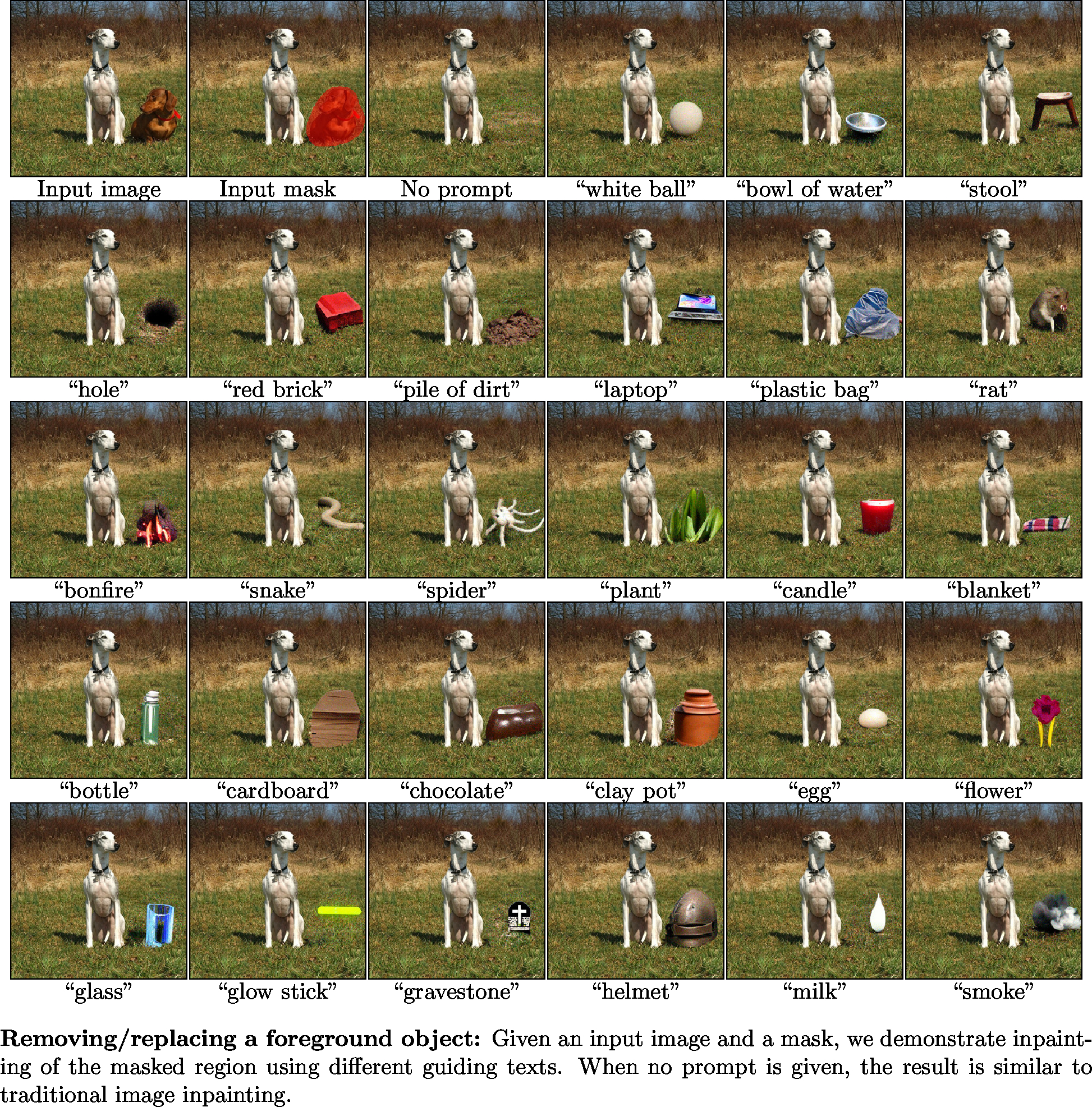Blended Diffusion for Text-driven Editing of Natural Images
Omri Avrahami, Dani Lischinski, Ohad Fried
Abstract: Natural language offers a highly intuitive interface for image editing. In this paper, we introduce the first solution for performing local (region-based) edits in generic natural images, based on a natural language description along with an ROI mask. We achieve our goal by leveraging and combining a pretrained language-image model (CLIP), to steer the edit towards a user-provided text prompt, with a denoising diffusion probabilistic model (DDPM) to generate natural-looking results. To seamlessly fuse the edited region with the unchanged parts of the image, we spatially blend noised versions of the input image with the local text-guided diffusion latent at a progression of noise levels. In addition, we show that adding augmentations to the diffusion process mitigates adversarial results. We compare against several baselines and related methods, both qualitatively and quantitatively, and show that our method outperforms these solutions in terms of overall realism, ability to preserve the background and matching the text. Finally, we show several text-driven editing applications, including adding a new object to an image, removing/replacing/altering existing objects, background replacement, and image extrapolation.
You may be interested in the follow-up project Blended Latent Diffusion, which produces better results and with a significant speed-up. Code is available here.
- Create the virtual environment:
$ conda create --name blended-diffusion python=3.9
$ conda activate blended-diffusion
$ pip3 install ftfy regex matplotlib lpips kornia opencv-python torch==1.9.0+cu111 torchvision==0.10.0+cu111 -f https://download.pytorch.org/whl/torch_stable.html- Create a
checkpointsdirectory and download the pretrained diffusion model from here to this folder.
An example of text-driven multiple synthesis results:
$ python main.py -p "rock" -i "input_example/img.png" --mask "input_example/mask.png" --output_path "output"The generation results will be saved in output/ranked folder, ordered by CLIP similarity rank. In order to get the best results, please generate a large number of results (at least 64) and take the best ones.
In order to generate multiple results in a single diffusion process, we utilized batch processing. If you get CUDA out of memory try first to lower the batch size by setting --batch_size 1.
This code borrows from CLIP, Guided-diffusion and CLIP-Guided Diffusion.
If you use this code for your research, please cite the following:
@InProceedings{Avrahami_2022_CVPR,
author = {Avrahami, Omri and Lischinski, Dani and Fried, Ohad},
title = {Blended Diffusion for Text-Driven Editing of Natural Images},
booktitle = {Proceedings of the IEEE/CVF Conference on Computer Vision and Pattern Recognition (CVPR)},
month = {June},
year = {2022},
pages = {18208-18218}
}













